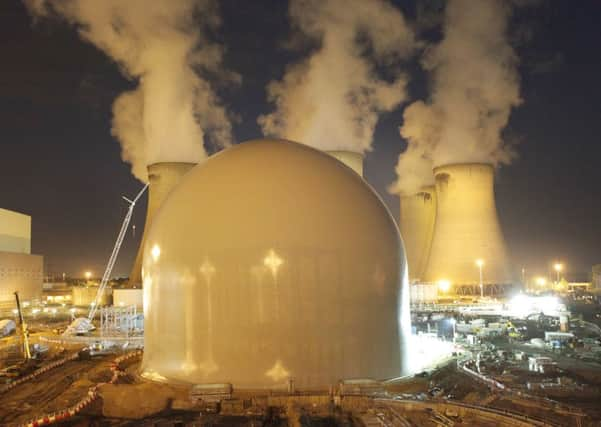Yorkshire power station helps boost UK’s green energy rates


Renewables accounted for 25.3 per cent of electricity generation in the second quarter of 2015, up from 16.7 per cent for the same period in 2014, and overtaking coal for the first time, which fell to generating a fifth of the UK’s power in the same period.
Higher wind speeds, increased amounts of solar panels and a 19.5 per cent increase in rainfall, mostly in May and June, driving hydro to record output, all boosted renewables, as did the conversion of a second unit of coal-fired power station Drax, in North Yorkshire, to biomass.
Advertisement
Hide AdAdvertisement
Hide AdThe UK’s biggest power station, near Selby, is converting three of its six generating units to run on sustainable biomass, biological material obtained from living or recently living plant matter that can be processed into electricity, fuel and heat.
The first unit was converted in the second quarter of 2013. From May 2014, a second ran as an enhanced co-firing unit, burning at least 85 per cent biomass, until it was fully converted in the fourth quarter of 2014. A third unit is being converted in the near future.
Drax Power Chief Executive, Andy Koss, said: “We’ve been working hard to replace coal with sustainable biomass and we’re on track to convert half the power plant to run on this new source of power by 2016. The technology we’ve developed at Drax means we’re powering around 6 million homes with cleaner, reliable and affordable electricity.”
According to government figures, the rise in renewables meant that low carbon technology’s share of electricity generation rose to close to half of the total power supply in the second quarter of the year, despite a slow drop in nuclear output compared to the same period in 2014.
Advertisement
Hide AdAdvertisement
Hide AdRenewables were the second biggest source of power in the second quarter, between April and June, behind gas at 30 per cent of electricity generation.
But the figures come following a series of Government announcements on curbing subsidies to solar and onshore wind, prompting concern it would stunt renewable expansion, halt falling costs of clean technology and lead to job losses.
Drax shares fell dramatically this summer after the Government said clean power will not be exempt from climate change tax.
Industry body RenewableUK’s chief executive Maria McCaffery said: “The new statistics show that Britain is relying increasingly on dependable renewable sources to keep the country powered up, with onshore and offshore wind playing the leading roles in our clean energy mix.”
Advertisement
Hide AdAdvertisement
Hide AdShe called for clearer signals from Government that it was backing new projects. She said: “If ministers want to see good statistics like we’ve had today continuing into the years ahead, they have to knuckle down, listen to the high level of public support we enjoy, and start making positive announcements on wind, wave and tidal energy.”